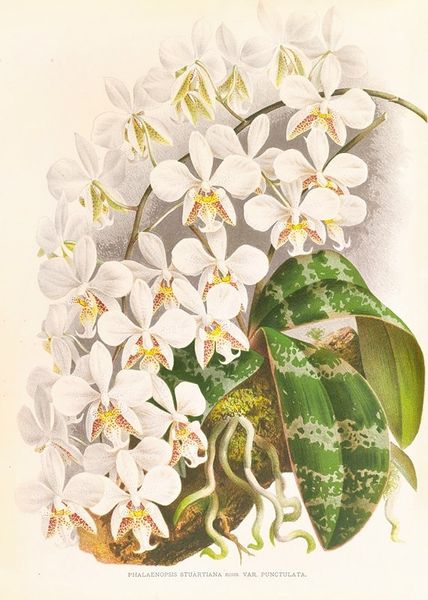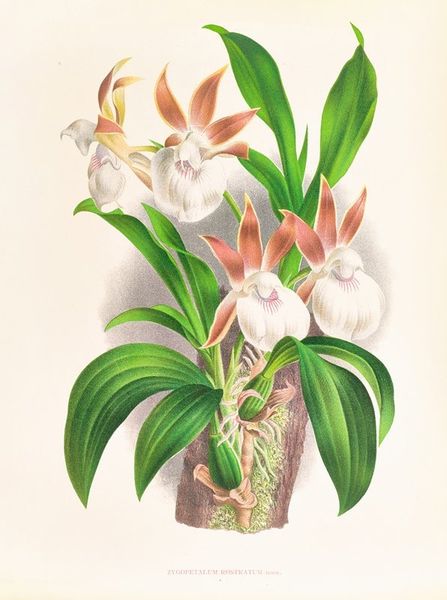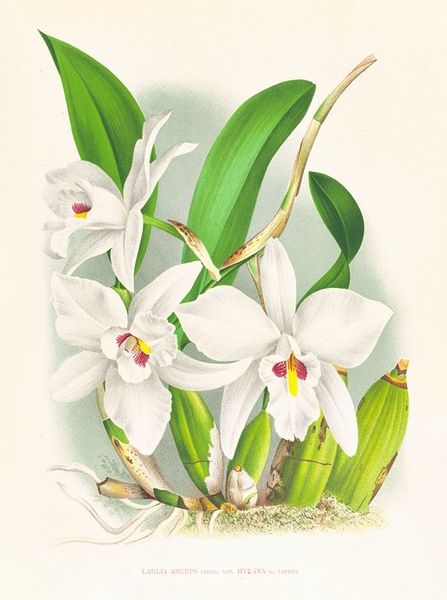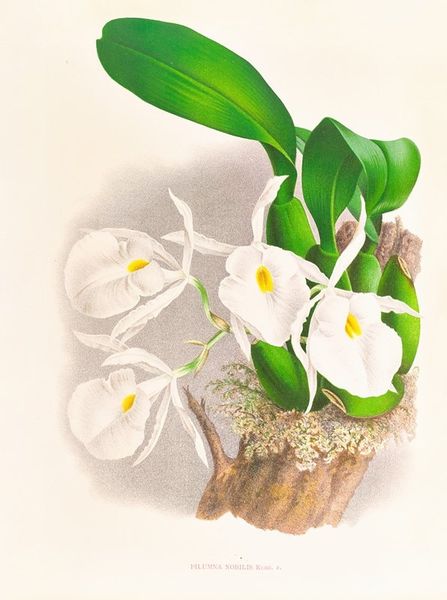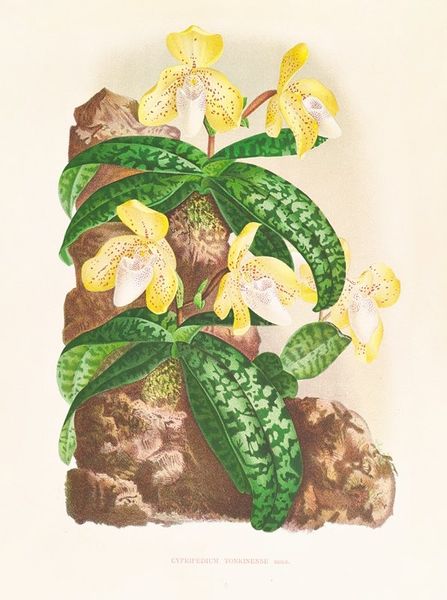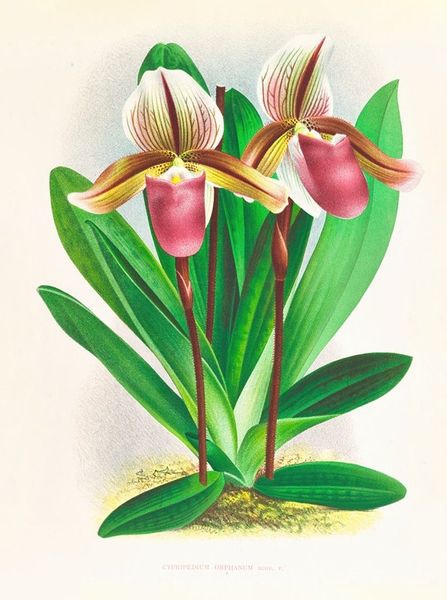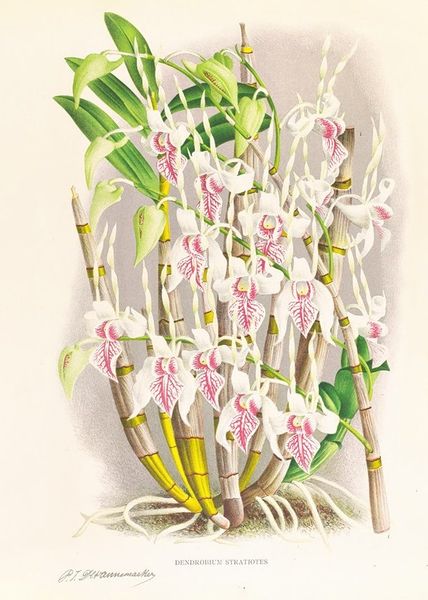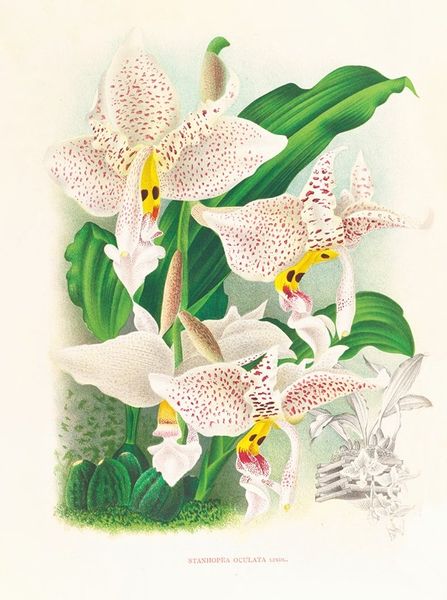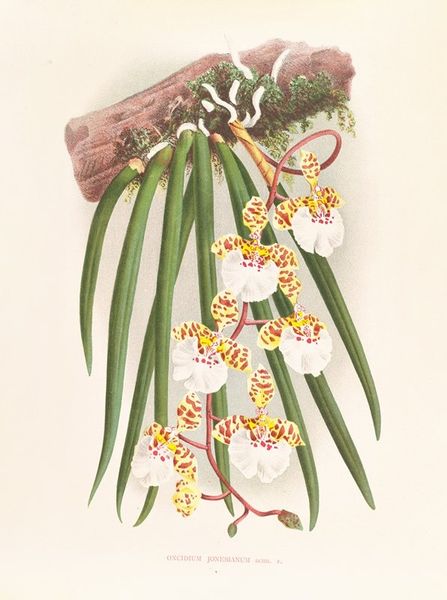
painting, watercolor
#
vegetal
#
painting
#
watercolor
#
green background
#
botanical photography
#
watercolour illustration
#
botanical art
#
realism
Copyright: Public Domain: Artvee
Jean Jules Linden's Aganisia tricolor is an early example of chromolithography, a printmaking process that was as complex as it was beautiful. To create this image, Linden would have used limestone slabs and applied a different color ink to each stone. Paper was then pressed onto the stones to create the final image. The result is extraordinary, as the artist captured the velvety texture of the green leaves and the delicate white and yellow orchid petals. Chromolithography was revolutionary because it allowed for the mass production of detailed, vibrant images. This opened up new avenues for botanical illustration, making it more accessible to a wider audience. Looking closely, we can see how the printmaking process has imbued the image with a unique quality. The layering of colors gives the image a sense of depth and dimension. Linden's work highlights how the means of production are essential to consider if we are to fully understand the cultural significance of an image.
Comments
No comments
Be the first to comment and join the conversation on the ultimate creative platform.


